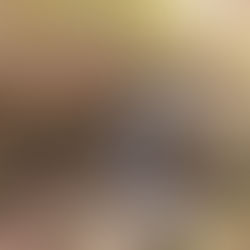A Great Gathering: The Procession Panel in Bears Ears National Monument
- Dan Wagner
- Jun 6, 2023
- 4 min read
Updated: Jun 9, 2024
Etched into an expansive sandstone cliff on the eastern slope of Comb Ridge, the Procession Panel narrates a tale from over a millennium ago. It showcases a detailed narrative featuring 179 human figures marching in three distinct lines converging towards a central circle, likely symbolizing a great kiva. The panel intricately portrays ancient individuals carrying baskets and ceremonial staffs, flute players, shamans, and hunters. Additionally, it includes depictions of various animals such as coyotes, sheep, a horned serpent, and an odd five-toed deer pierced by a spear. Notably, there's even an image of a desert bighorn seemingly turning a wheel, which is peculiar considering the absence of wheeled technology among the Ancestral Puebloans.
Interpretations of the panel's meaning vary, yet most concur that it commemorates a ceremony or gathering of profound importance. Discovered by a group of hikers exploring Comb Ridge in the early 1990s, the panel has enthralled archaeologists ever since. While dating the Procession Panel remains speculative, archaeologists suggest it was crafted during the Basketmaker III Era (500 AD to 750 AD). Regardless of its origin or intended significance, the Procession Panel stands as a remarkable testament to ancient art in the region, deserving of reverence and admiration from all who encounter it.


Trailhead elevation 4,648'
Water None
Don't miss the view from the top of Comb Ridge
Hiking to the Procession Panel
Hikers can locate the trailhead at coordinates 37.3511998, -109.6287606 along Rt 262/Lower Butler Wash Rd, approximately six miles beyond the Wolfman Panel Trailhead. The road parallels Comb Ridge for most of the drive to the trailhead and is most suitable for vehicles with high clearance. Once at the parking area, find the trail marker located at the west end of the lot.

The trail meanders through a landscape rich with cottonwood, willow, and tamarisk before crossing Butler Wash. Upon exiting the wash, another trail marker awaits, signaling the beginning of the slickrock ascent up Comb Ridge.

From this point forward, hikers should anticipate zero shade. The ascent up Comb Ridge starts relatively gentle but becomes progressively steeper. Cairns clearly indicate the route, making navigating fairly easy. After about 0.9 miles, hikers will encounter a spot where the trail reaches a high point, then descends into a drainage along a well-trodden section of slickrock. As a reference point, hikers can focus on the area highlighted by a yellow arrow below to stay on course.

Upon descending into the drainage, the trail flattens out somewhat, and cairns become less frequent, but navigation remains fairly easy. The final trail marker before reaching the Procession Panel is found around this point.

Following the last trail marker, cairns guide the remainder of the way. The trail then begins its second ascent, a 0.3-mile, 300-foot climb out of the drainage, marking the steepest section of the hike.

At 1.4 miles, hikers will arrive at the panel, located around the left end of the formation shown in the photo above.

A close up photo showing the human-like figures walking toward the great kiva.

The panel displays numerous anthropomorphic figures with outstretched arms adorned with long, claw-like fingers, reminiscent of a depiction found at the nearby Wolfman Panel. Some figures wear ornamental bird headdresses, carry staffs, or appear to be carrying packs or baskets on their backs.

To the right of the kiva, hikers will encounter a hunting scene portraying two animals being speared with atlatls. Above the hunt scene, five figures seem to be holding torches. Adjacent to the scene, there are two additional atlatls in a vertical position.

Directly to the right of the hunt scene, hikers will find what seems to be a depiction of a six-toed male animal with a snake overhead.

To the right of this, there is another large animal accompanied by a horned serpent beside it, along with what seems to be a reptile above the animal.

To the right of these depictions there are representations of what most consider to be human footprints or sandals.

Within 50 feet to the left of the main panel, there are several depictions of sheep, as well as a few human-like figures.

A closer look at some of the sheep depictions reveals smaller sheep surrounding the larger animals. Between the groups of sheep, there is another human-like figure wearing what appears to be a headdress.

There's much more to explore on the panel, and it's worth taking your time to do so at your own pace. The panel is ideally seen early in the day before sunlight shines directly on it. Once you've finished admiring the impressive panel, you might want to venture onward to the top of Comb Ridge for a spectacular view of the surrounding area from a high vantage point. To reach there, follow along the main panel wall, then ascend the steep slope leading away from it.

Ascending the slickrock will extend the hike by another 0.2 miles and 180 feet in elevation gain, but the effort is highly rewarding. Upon reaching the top, hikers will be treated to spectacular views of the Comb Ridge monocline in both directions and the Abajo Mountains to the north.

Once done taking in the views, simply retrace your steps back to the trailhead.
_edited.png)





















